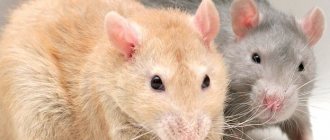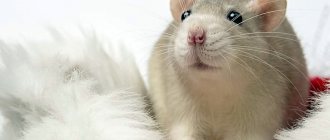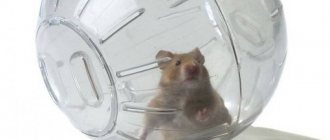What type of hedgehog is suitable for keeping at home?
Many people have probably at least once had the desire to pick up a forest hedgehog, bring it into their apartment, and keep the animal as a pet. But even a temporary stay of a forest guest creates many problems: night activity, reluctance to communicate, dietary habits. Attempts to pick up the animal can result in serious bites.
It is unlikely that an adult animal raised in freedom will be able to adapt to captivity. In addition, wild hedgehogs can carry dangerous infections (rabies, leptospirosis, helminthiasis, etc.), so the real risk of infection with viruses and bacteria stops many from taking a rash step.
It’s a completely different matter to buy an animal from a trusted nursery or specialized pet store. Healthy hedgehogs from domesticated parents, with good heredity, are oriented towards communication with humans from birth.
For normal interaction with a person, a hedgehog needs regular communication with him.
A generation of hedgehogs born in captivity is not at all afraid of people. The buyer’s task is to choose the appropriate variety of hedgehog for his soul and way of life. If you pick up an ordinary wild hedgehog that is in trouble, you should definitely show the animal to a veterinarian.
In the process of care, feeding, and treatment, you should strictly follow the recommendations of a specialist and exercise caution when communicating with a small predator. A forest hedgehog at home should not be a toy in the hands of a child; the animal’s bites are painful and have dangerous consequences. Breeders offer hedgehog breeds for home keeping:
- eared - very popular due to their miniature size. Strong immunity distinguishes all varieties: Indian, collared, Ethiopian, dark-spined, bare-bellied;
- Eurasian - widespread due to successful adaptation to Russian climatic conditions. Subspecies of Eastern European, European, and Amur hedgehogs are selected. They are best suited for inexperienced owners of prickly pets, since the animals are omnivorous and unpretentious in keeping;
- steppe animals are rare to purchase, since high demand is associated with the peculiarity of animals to lead a diurnal lifestyle and easily adapt. It should be taken into account that the Daurian and Chinese species are heat-loving hedgehogs that prefer low levels of air humidity;
- African - the most popular for keeping pets due to the special artificial breeding of the domestic breed. The animals are miniature, the animal easily fits in the palm of your hand.
The African hedgehog is a very clean and heat-loving animal, not adapted to the conditions of the wild. The prickly animal is only 16-20 cm in length, weighing no more than 500 g. The needles of the dwarf hedgehog, unlike related breeds, are not so sharp and hard.
The pet does not hibernate, runs less at night, and does not make as much noise as its relatives. All subspecies - Somali, Algerian, white-bellied, South African - are very sensitive to the indoor microclimate. It is important to maintain a temperature of 22-25°C for their comfortable living. Cold temperatures below 15°C are critical for delicate hedgehogs - the animals hibernate and may not wake up.
The African hedgehog has a very friendly and sociable character.
The domestic dwarf hedgehog was bred in different color options:
- “salt and pepper” - black mask, nose, eyes, most of the needles. There are dark spots on the light abdomen;
- gray - a combination of light and dark shades of gray, black eyes, nose, spots on the legs and abdomen;
- brown - a combination of shades of the skin, needles from gray-pink to chocolate. Black eyes with blue edging;
- “champagne” is a light beige color of uniform color. The mask is not expressed. Ruby eyes. Nose pink;
- “tsinakot” - light brown needles alternate with pale beige. The pink nose is covered with brown specks. The skin on the back and ears is also pink;
- “cinnamon” is a uniform light brown color, with a pinkish nose. Eyes black or ruby.
There are albino animals with a white, needle-like coat, scarlet eyes, and pinkish skin. Pygmy hedgehogs are very affectionate and tame. Some owners teach their pets to respond to their name and follow simple commands. Attachment to a person is very high.
Breed selection
All hedgehogs differ in appearance, size and color. Each breed has its own characteristics in maintenance and diet. That is why it is extremely important to understand what breed of hedgehog you would like to purchase.
African
This species includes: African hedgehog and white-bellied hedgehog. This is an unusual creature that needs certain temperature conditions - the higher the air temperature and the higher the humidity, the better.
Eurasian
The Eurasian genus includes: Eastern European, common and European hedgehogs - they are perfectly adapted to our environment.
Steppe
The genus of Steppe hedgehogs includes: Chinese and Daurian hedgehogs; for them, increased air temperature and average humidity are also very important.
Eared
These hedgehogs belong to the more unusual species - these are the Indian, bare-bellied, spiny and Ethiopian long-eared hedgehogs.
What to feed your pet hedgehog
In books and cartoons, hedgehogs often carry treats on their needles. But in nature, fruit can attach itself to the back of an animal only after hygiene procedures - hedgehogs roll under wild apple trees so that the juice of the sour fruit destroys parasites on the skin. The diet includes mainly animal food, only a third comes from vegetables and fruits.
Under natural conditions, animals hunt grasshoppers, snails, cockroaches, worms, caterpillars, lizards, frogs, and mice. In shallow water, spiny predators catch fry and small fish. The animal's omnivorous nature also manifests itself in home conditions, but under one condition - the food must be fresh, preferably live.
It is recommended to feed your hedgehog 1-2 times a day. The portion should not exceed 50 g of food, although the hedgehog will eat everything that is offered. Usually all that remains is food that is not suitable for the animal. Refusal to eat or poor appetite reflects health problems with the pet; a visit to the veterinarian will be required.
If a tiny hedgehog is brought into the house, only a few days old, then the baby can be fed with baby formula, or, if it is unavailable, with milk diluted with warm water. The mixture is given from a pipette every 2-3 hours, after which the baby’s tummy is lightly massaged to improve digestion. At one month of age, the pet's food is enriched with porridge, lean meat minced through a meat grinder, and boiled eggs.
When a domestic hedgehog gains a weight of 250-300 g, milk is removed from its diet, as the absorption of lactose becomes problematic. You can offer kefir, fermented baked milk, and cottage cheese in small quantities. 2/3 of the diet should be represented by chopped poultry, beef, boiled liver, and special live food from a pet store. A special place is given to fish, which is very important in the proper development of the animal.
Before serving, it is recommended to pour boiling water over minced meat and mix with rice and buckwheat. problems with what to feed your pet hedgehog . Even bird food, mixed with a boiled egg, will do. Vitamin supplements in the form of grated carrots, pieces of fruit, and vegetables are very important for the hedgehog’s body.
Fresh juices diluted with water can be offered in limited quantities. It is better to moisten bread and crushed crackers with them. Adequate nutrition ensures an active, healthy life for your pet, gives energy, and creates a positive attitude towards communication with household members.
Feeding the hedgehog
In their natural environment, hedgehogs eat primarily animal foods. Their diet is dominated by insects - beetles, spiders, caterpillars, slugs, earthworms. These animals are not averse to feasting on bird eggs, frogs and lizards.
Hedgehogs living at home can be fed not only with purchased insects, but also with meat, fish, eggs and offal. All this is given in boiled form. The preferred meats are chicken fillet, turkey, veal and horse meat - low-fat varieties.
It is important for your pet to get fiber. Its main sources are vegetables:
As for fruits, the home hedgehog likes apples, pears, strawberries, wild strawberries and bananas. It is better not to feed dried fruits to your pet, as they contain a lot of sugar.
Attention! Uneaten pieces of food are thrown away daily. Stale food is a favorable environment for the proliferation of pathogenic bacteria.
Keeping and caring for a pet hedgehog
Owners of pet hedgehogs need to remember that it is at night that pets of many breeds will be awake, actively stomping, and making noise. During the day they mostly sleep. In winter, hedgehogs hibernate for several weeks. The exception is pygmy hedgehogs, which are not adapted to natural habitats. You can slightly adjust the animal’s activity by feeding it only during the daytime.
You need to place your pet in a spacious cage or fence off a secluded corner in the room. The selected location should not be exposed to drafts or direct sunlight. For miniature hedgehogs, mainly African ones, 1 square meter is enough, provided that sometimes he walks around the room. If walks are not expected, then the area for the pet’s habitat should be doubled.
It is absolutely forbidden to give a hedgehog a couple. Animals do not live together - neither in families nor in groups. Born hedgehogs are separated from their mother after a month, after which they never cross paths. The appearance of a second animal in limited conditions of captivity inevitably leads to injury and death of one of the animals.
A high tray is desirable for the cage, since the hedgehog likes to actively dig into the bedding - sawdust and straw from the bottom will fly around. You need to install a house in the cage to shelter your pet (make it yourself or buy it at a pet store). The owner himself will transfer the insulation from the cage, straw, hay, sawdust, dry leaves to his secluded home.
It is important to remember that the hedgehog is a predator and leads an active nocturnal lifestyle.
The food can be laid out directly on the flooring, so the hedgehog will always have something to do. You should not pour water into a saucer, as your pet will knock over any container with its paws. It is better to use a rodent drinking bowl attached to the outside. Cleaning a hedgehog's home should be done as needed.
As a rule, 1-2 times a week is enough. The pet does not welcome intrusion into its possessions, so it may show dissatisfaction and bite the hand. For African hedgehogs, a running wheel is often installed in their cages, in which they enjoy spending time. Other breeds may ignore such entertainment.
Keeping a pet hedgehog is not complete without communication with family members. A cute creature can turn into a real bully if you don't monitor its behavior outside the cage. They will be upset by bitten wires, scratched floors, and overturned objects, but the animal itself can damage its paws, get injured in the process of exploring unfamiliar things, or swallow something that is not intended for food.
Communication must be controlled and safe. Sometimes you can give your pet a bath if you need to clean the animal’s prickly coat or belly. A hedgehog at home will live longer if it is protected from parasites, ticks, and various types of infections. Hibernation in domestic hedgehogs is shorter than in the natural environment, since there is no physiological need to preserve life in unfavorable cold conditions.
The animal prepares for it in advance. Before hibernation, the pet's appetite increases - fat is required for the resting period. The animal's body temperature decreases and its heartbeat slows down. The animal should not be disturbed at this time, because the body is subject to stress and is especially vulnerable. It is better to move the cage to a cool and quiet place. You can bring the hedgehog out of its sleep state by warming it up by placing a bottle of hot water wrapped in a towel nearby.
Reviews
The rich imagination of Soviet writers and animators endowed hedgehogs with thriftiness and a love for fruits, vegetables and mushrooms. In fact, hedgehogs do not intentionally string anything onto their spines. And even more so - apples and mushrooms. If only because hedgehogs are predatory, and to be more precise, insectivorous animals. That is, for their food in nature, they primarily look for beetles and worms.
Mrs_Serejkina
https://www.be-bloggers.com/lifestyle/pets/216-ezhik.html
They stomp at night! When they poop, you can’t clean it up right away; the poop hardens like cement—you beat it off with a hammer and a chisel. They prefer to eat Druzhba processed cheese and sleep in suitcases. Such rare, lively and inventive beasts. I had two of them.
Yuri
https://fishki.net/1236106-soderzhanie-ezhej-v-domashnih-uslovijah.html
He runs around at night, so it is advisable to place the cage away from the bedroom. It doesn't smell! There is no smell like mice, hamsters and rabbits. But her urine and poop smell, and after night runs there are a lot of them, including in the wheel, so you need to clean the cage at least once every 2 days!
MamaEsenii
https://otzovik.com/review_2359288.html
We can’t eat sawdust not at all because of the foreskin... Their pussies are very well hidden! The fact is that hedgehogs often take their food out of bowls and sawdust that gets into the food is not eatable at all! They are not digested (hedgehogs, after all, predators, not herbivores), and then they can get stuck in the throats of little ones... Dust from sawdust is another problem for hedgehogs... Mine are kept in a plastic box, and since we have a lot of light at home, my husband attached them a box for sleeping..well, in general, to have somewhere to hide..Hedgehogs don’t need much space, the main thing is to let them run around..If there is a shaded place in the apartment, then you don’t have to make a box.
aksyuscha
https://www.kid.ru/forummam9/t50403–0.html
About liver and other meat - it is better to boil it to avoid problems with worms. About walking around the house. Hedgehogs have cocktails, sir. Moreover, on the hind legs there is one long claw - twice as long as the others for the convenience of scratching thorns. Ours climbs to a height of 30–40 cm. So there is a possibility of getting on beds and sofas. And the worst thing is that they don’t know how to jump and fall, and they don’t feel heights at all. Therefore, the height of the sofa can be traumatic for them. It is better not to leave “children” unattended.
Hedgehog
https://forums.zooclub.ru/showthread.php?t=1479
There is something that is dull, scratching something in the corners, either under the sofa or under the closet. But he has already become almost tame, at night or in the morning he runs to the bed and looks in, apparently he realized that when I get up, I’ll feed
Andrey Voron
https://7ooo.ru/forum/topic_1098/
My mongrel, when the hedgehog runs around the sofa, likes to put his neck in the middle of the hedgehog’s path so that he can be sure to be noticed by the hedgehog and follows him with his eyes. Then the hedgehog runs up, buries its nose into her fur and begins to lick her skin. My dog likes this until he bites. The dog jumps up in confusion, and the hedgehog hangs on its neck for several seconds
orangeirina
https://www.e1.ru/talk/forum/read.php?f=74&t=1431101
Hedgehogs definitely need hibernation, they must stay in it for at least 2-3 months, otherwise they live literally 2-3 years without hibernation. If you live in a private house, you can do it like we do. The cage with the hedgehog stays outside all summer and autumn. As it got colder in the fall, he was given a lot of hay, dry leaves, old rags, he built himself a nest from them and sleeps. But when very severe frosts begin -10 and even lower, we take them into the house.
bird777
https://irecommend.ru/content/ezh-ocharovatelnyi-simpatyulya-sovety-po-soderzhaniyu-doma-i-kormleniyu
Cute prickly creatures can make excellent pets and bring a lot of joy to their owners. But before getting a hedgehog, you should evaluate your own capabilities, since keeping such an animal has a number of features.
- Author: Maria Sukhorukikh
Rate this article:
- 5
- 4
- 3
- 2
- 1
(0 votes, average: 0 out of 5)
Share with your friends!
How long does a domestic hedgehog live?
Under natural conditions, the life expectancy of a hedgehog is 3-5 years. The presence of natural enemies, hunger, and a large number of diseases affect the lifespan of wild animals. Not all individuals recover from hibernation, when life reserves run out. If you bring a hedgehog home, it is unlikely that it will become a long-liver due to stress and a bunch of acquired diseases.
Babies born in captivity are healthy from the first days of life. Proper care, supervision by veterinarians, nutritious food, and the creation of a comfortable environment ensure a longer stay for pets near humans.
How long a domestic hedgehog lives in captivity depends partly on the breed of the prickly predator. It has been noticed that steppe (Chinese), long-eared, and African hedgehogs are more hardy. At home, their lifespan is 10-12 years. The record holder was a 16-year-old hedgehog.
Is it possible to touch a hedgehog?
Now, during the active migration of wild animals, hedgehogs can be found not only in the forest and at their summer cottage, but also in the city. ... If you meet an animal, you should under no circumstances touch it, since hedgehogs are carriers of many infectious diseases, the center’s specialists warn.
Interesting materials:
What does Safe Transaction mean in Yulia? What does it mean in Yulia that a product is in reserve? What does it mean on the three card there are Unrecorded tickets? What does DOS mean on a laptop? What does the 64 cm pattern on wallpaper mean? What does it mean for processing in PFR? What does it mean that the phone's limit has been exceeded? What does HDMI mean on TV? What does it mean that your number has an outgoing communication restriction? What does it mean to start over?
How to determine the sex, reproduction of a hedgehog
It is better to determine the sex of the animal in older babies, older than 5 days, so as not to make a mistake. You need to look at the hedgehog's tummy. The genitals of females are located closer to the anus, the genital organ of a small male is located almost in the center of the abdomen, and as the animal grows it moves lower.
If in the summer there is a need to take the animal home from the forest, then you should remember that the female must have offspring nearby. Without a hedgehog, the babies will die from cold and hunger. The absence of a male will not affect the brood. If possible, the animal should be returned to the same place where the first encounter took place.
The first offspring from a domestic hedgehog should be obtained when its age is less than a year, but more than 5 months. It is better to select a middle-aged male. Mating is allowed no more than 2 times a year. The couple is put in one cage, doubling bowls and houses, to avoid fights. Even if the rapprochement of the animals is not noticed, it is not advisable to keep them together for more than a week.
The female is observed for a month, since it is not always possible to determine pregnancy visually. Gestation lasts 31-35 days. After giving birth, the mother cannot be disturbed; she may eat the hedgehogs in fear that the den has been discovered.
It is quite easy to distinguish a male hedgehog from a female.
Babies are born helpless, almost naked, sometimes covered with soft needles. The mother feeds them and warms them with her warmth. After two weeks, if the hedgehog is outside the house, you can carefully pick up one baby from the brood for the first time. The offspring will become independent in 5-7 months, then the hedgehogs can be separated from the mother.
Four legs, the fifth is a tail
The weight of hedgehogs can reach one and a half kilograms, and their body length can be up to 40 centimeters. These cuties are born with spines, but in the first day of life they are soft and only then harden. In total, the hedgehog carries more than 6,000 needles, which are regularly changed throughout its life.
The prickly animal's mouth is full of small sharp teeth - 36 in total. There are sharp claws on its paws. Hedgehogs also have a tail, which is almost invisible.
But it’s worth looking at the photo of a pet hedgehog, freely positioned with its belly up on the hand of its happy owner: a small, almost invisible tail is located, as it should be, between its hind legs.
Pros and cons of keeping a hedgehog at home
Before adopting a hedgehog as a pet, you need to take into account the peculiarities of living together in advance. If there are small children in the house, then the animal, which loves peace and quiet, will suffer from noisy games, sudden movements, squeezing, and intrusions into a secluded corner of the cage.
The animal is capable of biting an uninvited guest on its territory, which will cause pain and create a barrier in communication with the pet. It should be taken into account that, unlike affectionate cats, a hedgehog will not be able to adapt to the rhythm of life of its owners and will distract with its activity when everyone in the household wants to get some sleep.
Taming an animal requires time and the desire to communicate daily, taking into account the needs of the animal. In response to attention and care for the prickly predator, the hedgehog will delight the owner with trust and friendliness. An exotic pet is suitable for a lonely person who will find in a hedgehog a little friend who can awaken his most sincere feelings.
Keeping a hedgehog at home requires a large aviary or cage.
Cell preparation
You must choose a cage for your pet that is spacious, with an impenetrable bottom, the area of which should be about 60*60 cm. The distance between the bars should be small so that it cannot get stuck or crawl through and escape. The cage must be equipped with a running wheel, because a hedgehog, like a pet, needs movement.
Depending on the temperament of the pet in the cage, he needs to build a nest. For a sociable hedgehog, it will be enough to lay down a small towel or blanket. A cowardly pet needs a house. The cage must be equipped with a food bowl and drinking bowl.
Filler
The floor of the cage must be covered with dry grass or chopped straw. For the hedgehog's toilet, gently fence off one of the corners of the cage; it is preferable to fill it with large sawdust or medium-sized soft zeolite granules.
Drinking bowl
There should always be a drinking bowl with clean water in the cage; it is best to attach it to the wall. Pneumatic drinkers are very convenient to use, in which the water remains clean for a long time and no feed residues get into it.
Adaptation
When you buy a small hedgehog and bring it to a new place, at first it will be under stress. This is all because hedgehogs see poorly, but they smell perfectly and hear wonderfully. In a new place with unfamiliar smells, your prickly pet will feel constant danger until it settles into its surroundings.
How to name a pet
You can give your hedgehog any nickname you like. For example, take a pet’s thorns as a basis (Cactus, Thorn, Igolkin, etc.) or paraphrase the word hedgehog (Ezhan, Hedgehog, Hedgehog, etc.).
You can name a hedgehog based on its external features (White, Snowflake, Coal). You can come up with a lot of nicknames for your pet.
Price
You can buy a prickly animal at a pet store or nursery. The price of a hedgehog depends on a number of factors, including the type of animal, age, and color. The most affordable common hedgehogs start from 3,000 rubles. Exotic African hedgehogs can cost 12-15 thousand rubles.
When purchasing, it is important to purchase a healthy pet with clear eyes, without sagging skin, spots, or bumps on the skin. The baby's nose should be dry, without crusts. A sign of a sick hedgehog is “staggering syndrome” when walking.
Individuals with a characteristic gait usually have several diseases. The tummy of a healthy pet is evenly covered with fur, without bald spots or tangles. The acquisition of a prickly friend will definitely bring bright colors to the usual home life of any person.
Description of hedgehogs
The hedgehog family includes 2 subfamilies. These are real and gymnur or rat hedgehogs. Gymnurs have a body covered with hard hair, a long tail, and an elongated muzzle.
They look more like a big rat. Real hedgehogs look a little different:
Representatives of hedgehogs are solitary. In nature, they occupy the burrows of other animals or hide under the roots of trees. They make a hole out of dry leaves, grass and soft moss.
They try to stay in their shelter all day long; at night they crawl out of their holes in search of food. Individuals determine their territory, in which they hunt, and jealously guard it.
When keeping at home, it is necessary to take into account the characteristics of hedgehogs. The pet is suitable for people who are owls by nature. In nature, animals divide all living organisms into 2 groups: food and danger. A person can be regarded as an enemy, so hedgehogs often show aggressiveness and can bite.
Hedgehogs mature at 12 months. During the season, the female brings 1-2 litters. Pregnancy lasts 49 days. Each can have 2-5 cubs.
They are born blind with soft spines. The real shell is formed already on the 15th day.
The cubs feed on milk. From the age of one month they begin to emerge from the hole. The mother teaches them to get food.
Diseases
Under good conditions, hedgehogs practically do not get sick.
But still, you must know what diseases your pet may have:
- Pneumonia. This disease can occur as a result of hypothermia. The animal does not eat at all, constantly licks its nose, sneezes, and has a cough.
- Indigestion. Feces in healthy animals are brown. But if you see mucus or bile in your pet’s stool, this means that he has problems with the gastrointestinal tract.
- Fungus. The animal loses needles and fur. Crusts and flaky spots appear on the skin.
- Ticks, helminths. If a hedgehog is infected with a tick, scratches and wounds will be noticeable on the animal's body. When infected with parasites, your pet will lose weight even with good nutrition.
Keeping a pet hedgehog is a very interesting activity. If you provide your pet with good living conditions and feed it properly, it will please you for a long time.











